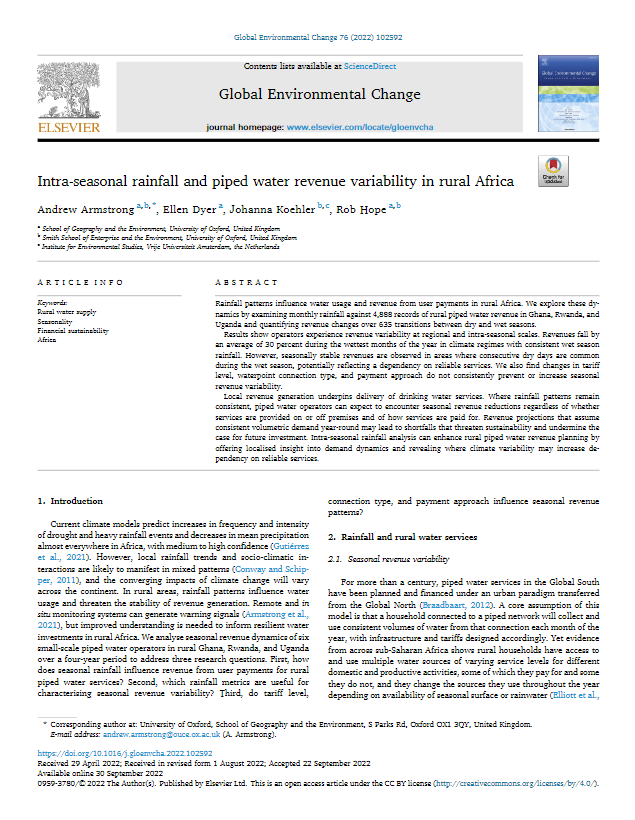Authors: Andrew Armstrong, Ellen Dyer, Johanna Koehler, Rob Hope
Rainfall patterns influence water usage and revenue from user payments in rural Africa. We explore these dynamics by examining monthly rainfall against 4,888 records of rural piped water revenue in Ghana, Rwanda, and Uganda and quantifying revenue changes over 635 transitions between dry and wet seasons.
Results show operators experience revenue variability at regional and intra-seasonal scales. Revenues fall by an average of 30 percent during the wettest months of the year in climate regimes with consistent wet season rainfall. However, seasonally stable revenues are observed in areas where consecutive dry days are common during the wet season, potentially reflecting a dependency on reliable services. We also find changes in tariff level, waterpoint connection type, and payment approach do not consistently prevent or increase seasonal revenue variability.
Local revenue generation underpins delivery of drinking water services. Where rainfall patterns remain consistent, piped water operators can expect to encounter seasonal revenue reductions regardless of whether services are provided on or off premises and of how services are paid for. Revenue projections that assume consistent volumetric demand year-round may lead to shortfalls that threaten sustainability and undermine the case for future investment. Intra-seasonal rainfall analysis can enhance rural piped water revenue planning by offering localised insight into demand dynamics and revealing where climate variability may increase dependency on reliable services.

